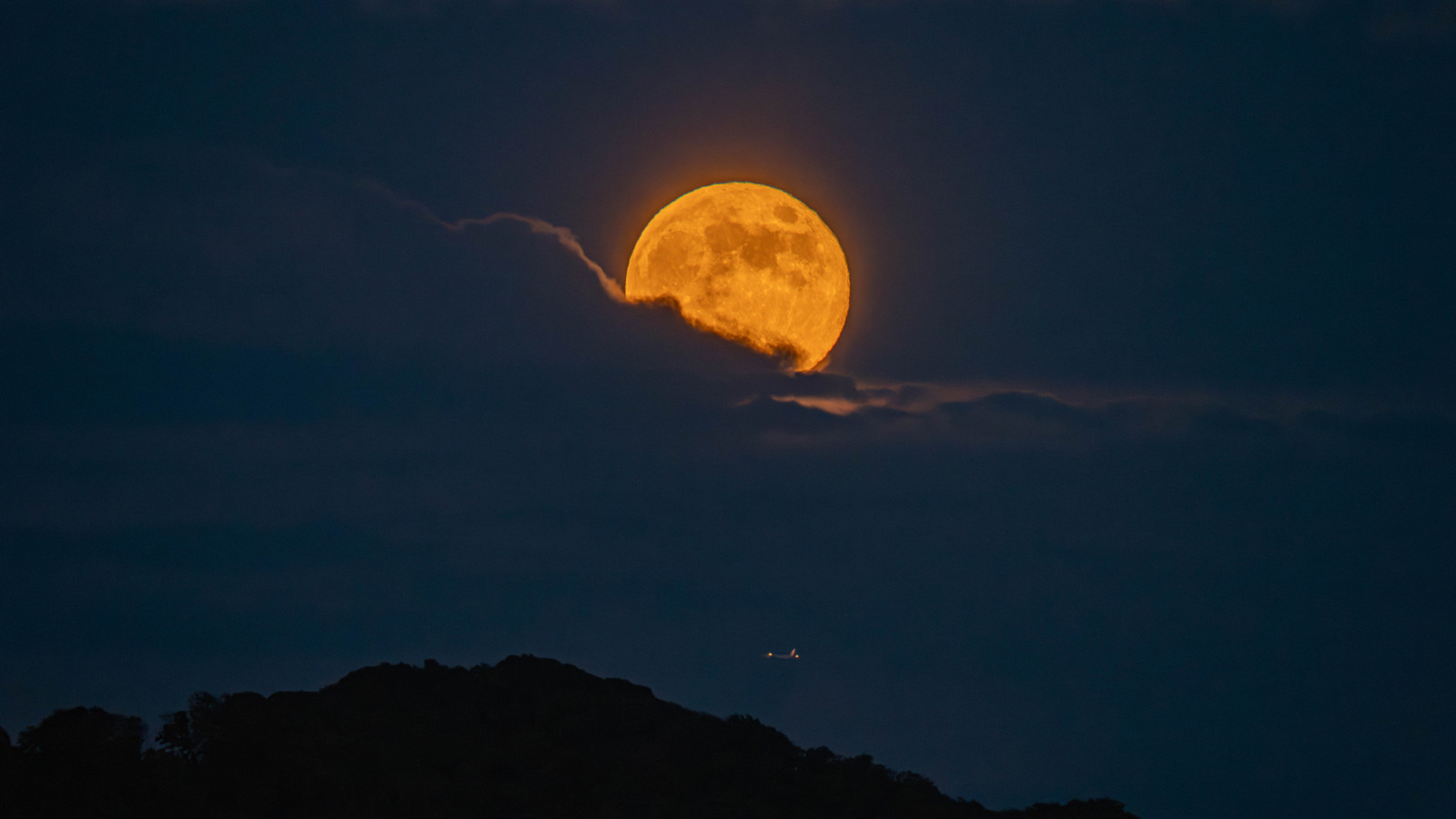As the Earth flies through space in its celestial dance around the sun, it’s accompanied by its perpetual partner, the moon. For as long as we’ve had oceans, the moon has been tugging on their waters, giving us the ebb and flow of the tides. And when life first emerged from the sea and looked up to the sky, the moon was there to greet it. The Earth has shared so much of its history with the moon that it’s easy to forget that it didn’t always have one.
Based on our current best understanding, the solar system formed from a primordial nebula – a cloud of dust that coalesced under the force of its gravity creating a flattened disk that bulged in the middle. After that bulge became dense enough to fuse hydrogen together, it ignited into our sun, all the while, collisions in the disk were forming planets, moons, and meteors. Assuming that everything came together at the same time, we can make a rough estimate of the age of the sun and planets.
By subjecting meteors to radiometric dating, we know that the sun and Earth are around 4.6 billion years old. When similar radiometric dating techniques are applied to rocks brought back from the moon landings, the oldest rocks are found to be 4.46 billion years old, meaning that the moon is at least that old, and likely a little bit more. So, if the moon didn’t form with the Earth, where did it come from?
Where did the moon come from?
There are lots of theories that try to explain where the moon came from. None of them are perfect, but in general, any theory of moon formation has to account for five things: the angular momentum of the Earth and the moon, the mass and density of the moon, the low relative mass of the moon’s core, the absence of volatile elements (elements that vaporize easily), and the similarity between elements on both the Earth and the moon.
No one theory can account for all of these requirements, but most scientists (NASA included) believe the moon formed when the young Earth was struck by another planet (dubbed Theia for the mother of the Greek moon goddess Selene) about the size of Mars. There are a few reasons that scientists believe this to be the most likely formation event.
The Earth getting struck by a planet-sized object would help account for its angular momentum. Because this hypothesized event would scrape away the outer layers of Earth, it would leave the protomoon with a very small iron core. The energy released by such an impact would also account for the missing volatiles. But there’s one important factor this scenario doesn’t account for, and it’s created something of a crisis in the field of selenology.
Can we resolve the isotopic crisis?
To understand the “isotopic crisis,” it helps to have an understanding of what isotopes are. Not all oxygen atoms, for instance, are created equal. “Normal” oxygen is composed of eight electrons, eight protons, and eight neutrons. This is called ¹⁶O based on the sum of protons and neutrons, but it’s possible for oxygen to have more or fewer neutrons. These different atomic configurations of the same element are called isotopes.
Most isotopes of oxygen are unstable and rapidly decay into other elements, but there are three which are stable and don’t decay: ¹⁶O, ¹⁷O, and ¹⁸O. Scientists can use the ratios of these oxygen isotopes trapped in rocks as a sort of planetary fingerprint. For example, the isotope ratios between Earth, Mars, and various meteorites are distinctly different, while the ratios of rocks on the moon are identical to Earth.
The isotopic similarity between the Earth and the moon implies a common origin, but based on most impact simulations, the bulk of the moon’s material would have come from Theia, not Earth. In other words, the two objects should have different isotopic ratios. Resolutions to this crisis have been put forward, but none can fully account for the moon and Earth as they are today.
Alternate lunar origin theories
Even though the impactor theory outlined above is the most popular theory about the origin of the moon, there are others. In the 1800s, George Darwin (son of Charles) postulated that the early Earth spun so fast that the moon was essentially flung out of it, but modern science doesn’t support this idea. Another idea was that the moon formed at the same time as the Earth, but due to the small size of the lunar core, this isn’t likely either.
Assuming the moon was formed by an impact event, there are a few alternate theories that may explain its origin. The easiest solution is that the impacting object had an identical isotopic composition to Earth. Based on what is known right now, this scenario isn’t likely. It has also been suggested that debris from the impact, vaporized oxygen in particular, could have mixed post-impact, but that wouldn’t account for the isotopic similarity of heavier elements like titanium on both bodies.
Given the current body of knowledge, it’s impossible to say with any certainty how the moon was formed — we simply have to wait for more data. Thankfully, we could be close to an answer. NASA plans to send humans back to the moon as soon as 2027, and it’s possible that the knowledge unlocked from that mission could be the key to finally solving the mystery of the origin of the moon.

